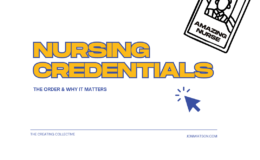I often receive compliments when speaking publicly, but that doesn’t mean I am a natural public speaker. In fact, I am usually terribly nervous, and I spend quite a bit of time preparing. In my opinion, preparation and attention to details make good presentations great presentations. Here are a few points I stick to when presenting. I hope they help you, as well.
1. Tell a story. Brothers Chip Heath and Dan Heath discuss story-telling’s importance in their best-seller, Made to Stick. That book changed the way I present information. I tell stories every time I present, whether they are my own, belong to others, or just plain made up. Typically, I save blog posts from some of my favorite bloggers to share, with their permission and proper reference of course, as an opening and tying thread throughout to my talk. From healthcare professionals to patient advocates to patients themselves, there are so many great bloggers sharing their stories, and those stories can help convey a point much better than bullet points or graphs. If you’re not comfortable telling a story, remember there are lots of video stories you can embed into your presentation that will give the same memory impact, and it will diversify your presentation format, which the learner will appreciate.
2. Use PowerPoint wisely. We’ve all been there as the listener or viewer – trying to look at the 62 slides full of a weird font color, too small type, horrible clip art, watching every letter slide onto the screen. It’s painful. Nurses are notorious for these common mistakes, in my opinion. Just because there are a gazillion PowerPoint transitions or a PowerPoint background with a cat on it does not mean you need to include them in your presentation. If you have difficulty making your presentation aesthetically appealing, ask a creative-type for help.
3. Script your talk. I prefer to script my discussion word-for-word. Once I’ve presented a topic a few times, then I feel more comfortable moving away from the script, but for my first presentation, I need time to think through my thoughts and plan deliberate words.
4. Interact with your audience. Interactivity is an evidence-based practice of adult learning. So many times we think presentations should be didactic only, when, in reality, they should be a two-way discussion to help with knowledge transference. You can make your presentation interactive by asking questions and actually waiting for answers, making your presentation into a game of sorts (a simple BINGO game or crossword puzzle, anyone?), or extending the education via social media back channels.
5. Practice. Out loud, in front of a mirror, in front of others you trust to provide open, constructive feedback and to ask difficult questions (about both the visual and auditory presentation portions), on video, and with your outfit on, if needed (heels, jewelry, hair) – practice, practice, practice. I personally feel more comfortable when the information is practically memorized. It gives me the opportunity to work on my body language – smiling, making eye contact, and walking and using my hands purposefully.
6. Anticipate questions. Again, I prefer to write down every possible question and then answer them word-for-word. When I invite others to critique my presentation, I specifically ask them to go above and beyond with the questions. Others are asking me to present a topic because they believe I am an expert or a growing expert on the issue. I certainly want to deliver on that thought. I find when I am over-prepared, that preparation usually pops up as a brilliant opportunity somewhere else. It has helped me on many occasions.
Happy presenting!






Kim
May 31, 2011 11:12 amGreat overview – you can never be too prepared to present! : )
nursetopia
May 31, 2011 10:04 pmThanks, Kim!
Gretchen
August 13, 2014 7:22 amI’m always looking for presenting tips- happy I use most of these already. I especially agree with #1, and this provides great ideas of where one can get stories, if they don’t have one of their own. I’ll have to try this!